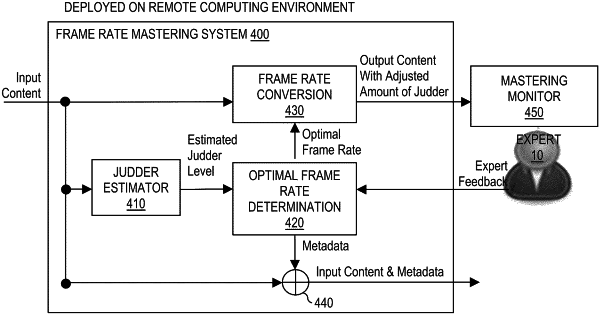| CPC G06T 7/13 (2017.01) [G06T 7/44 (2017.01); G06T 2207/10016 (2013.01); H04N 19/577 (2014.11)] | 17 Claims |

|
1. A method comprising:
generating, via an edge detection algorithm, a first set of edge maps based on a first set of subsampled images of a plurality of different resolutions, wherein the first set of subsampled images is sampled from a first frame of an input content comprising a sequence of frames;
generating, via the edge detection algorithm, a second set of edge maps based on a second set of subsampled images of the plurality of different resolutions, wherein the second set of subsampled images is sampled from a second frame of the input content, and the first frame precedes the second frame in the sequence of frames;
determining a set of differences between the first set of edge maps and the second set of edge maps;
determining a metric indicative of an estimated amount of judder present in the input content based on the set of differences and a set of different weights corresponding to the plurality of different resolutions; and
dynamically adjusting a frame rate of the input content by selecting, based on the metric, an optimal frame rate from an optimal frame rate table, wherein the optimal frame rate table maps at least one estimated amount of judder to at least one optimal frame rate, the at least one optimal frame rate is based on one or more preferences, and the input content is displayed on a display device at the selected optimal frame rate as output content;
wherein a first amount of judder present in at least a set of the sequence of frames is different than a second amount of judder present in a corresponding set of a sequence of frames of the output content.
|